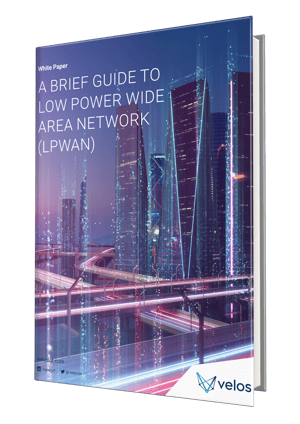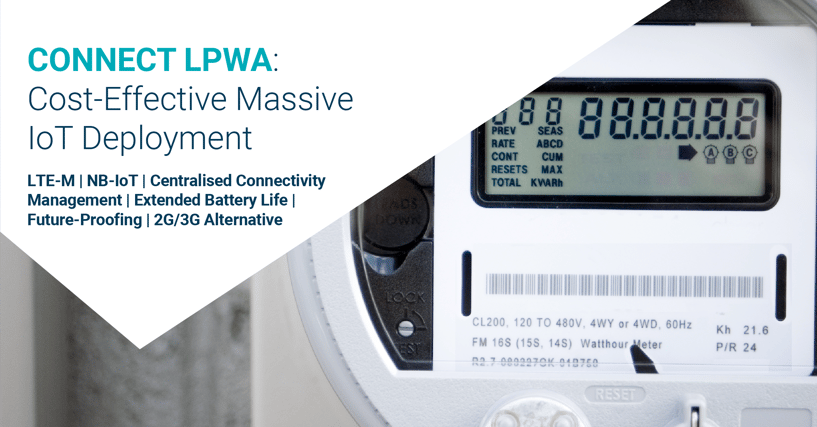What is Low Power Wide Area Network?
Short for Low Power Wide Area Networks, an LPWA network relies on a standard and ubiquitous LTE wireless service enriched with optimisation protocols for machine-to-machine communication and reduced power consumption.
Modern connected devices have different requirements, so a trade-off between data rates, better power efficiency and longer signal range must be found. This is where LPWA networks come into play with their longer-range signals and additional protocols for reduced device power consumption. Data and signalling information transport are optimised in the network, which saves the device battery and limits network impact with massive IoT deployment.
This combination is important because LPWA networks are usually driven by battery-powered devices. Sensors, monitors, cameras, and other IoT devices aren’t usually connected to a steady power source and must remain on the field for up to ten years without human intervention. Therefore, they require connectivity that can reach them worldwide without draining their energy.
LPWAN was developed to meet these unique needs, providing medium or low throughput connectivity while reducing how often devices need to be replaced or recharged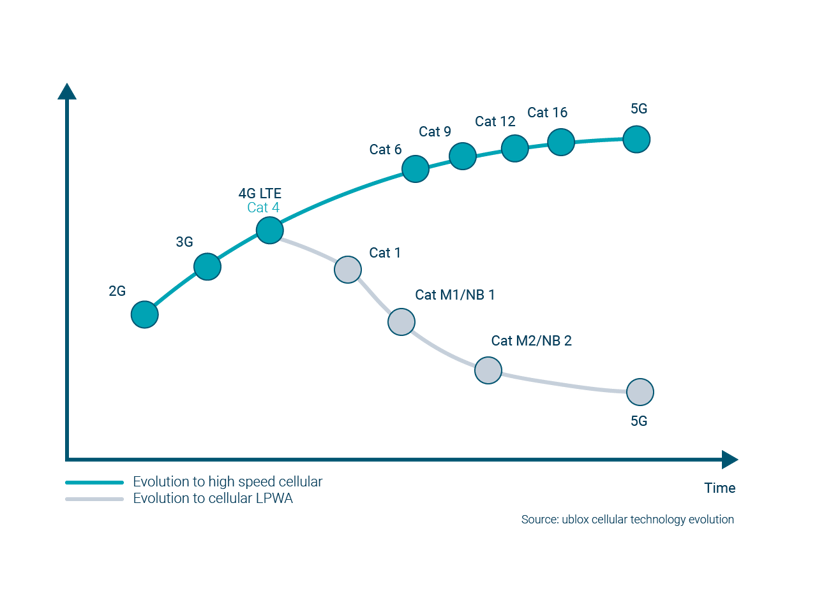
Understanding Low Power Wide Area Network (LPWAN)
Low Power Wide Area Networks are used in specific IoT use cases, and they come with several clear benefits for devices needing optimisation protocols.
Network attributes
-
Low power
First and foremost, a device on an LPWA network uses little power due to protocols and the capability of standby/sleep state. Maximum output power is reduced in some cases compared to standard LTE. This allows devices to run on small batteries for up to 10 years, reducing the replacement cost significantly.
-
Wide area
Depending on the technology, LPWA networks range between 30 km to 100 km, making them frontrunners for remote applications. Additionally, due to the low-frequency connection, LPWAN supports IoT devices located in challenging conditions, underground or indoor environments. For example, water, gas, and electricity metering devices are often installed in basements, where LTE coverage is limited, but LPWAN can penetrate.
-
Data optimisation
LPWAN can accommodate data packet sizes typically from 10 to 1000 bytes at uplink speeds up to 200 Kbps. This makes it an ideal option for simple IoT devices that are not streaming large quantities of data to a server.
Different Low Power Wide Area Network Technologies
There are other features associated with various LPWA connectivity technologies, which we will explore below. Let’s list the most popular and versatile LPWAN connectivity types currently available.
CAT-M1
CAT-M1 uses 4G networking to provide less throughput than CAT 0/1/4 and has a narrower bandwidth of 1.4 MHZ compared to 20 MHz of standard LTE or CAT 0/1/4. This lets you transmit larger data packets and perform basic application functions.
The benefits of CAT-M1
- Built on existing 4G networks.
- Supports larger data packets, enabling more complex application functions.
- higher data rates, wide bandwidth, and lower system latency
- Works with existing LTE networks
CAT-1 vs CAT-M1
|
Specification |
CAT-1 |
CAT-M1 |
|
Bandwidth |
20MHz |
1.4MHz |
|
Downlink (DL) peak rate |
10Mbps |
1Mbps |
|
Uplink (UL) peak rate |
5Mbps |
1Mbps |
|
Power demand |
Low |
Very low |
|
Transmission Duplexity |
Full duplex |
Full duplex or half duplex |
|
Complexity |
Moderate (simpler than CAT-4) |
Much lower than CAT-1 |
Narrowband IoT (NB-IoT)
Narrowband IoT, or NB-IoT, is a type of Low Power Wide Area technology that is highly affordable. This makes it an excellent option for large-scale operations like smart cities, smart metering, and smart assets.
NB-IoT is developed for large-scale low bandwidth vs throughput/transmission IoT use cases and a huge network of sensors, meters etc. It offers data transfer speeds up to 30 kbps downlink and up to 60 kilobits per second uplink using 180 kilohertz of cellular bandwidth.
However, NB-IoT in some regions is not prevalent due to the complexity of creating and maintaining a new dedicated network; for example, it isn't widely available in the US, where LTE-M is the more prevalent option. This is due to LTE-M radio being fully compatible with LTE one, while NB-IoT is not, requiring changes in the access networks. It is, to a large extent, a new radio access technology. Elsewhere, however, NB-IoT can be a great choice.
The benefits of NB-IoT
- NB-IoT is great for indoor use.
- NB-IoT can preserve the battery life of devices very well.
- It doesn't interfere with other networks, making it great for network-dense areas like cities.
- You can use NB-IoT for both uplink and downlink.
- Great for devices that frequently send/receive small bursts of data.
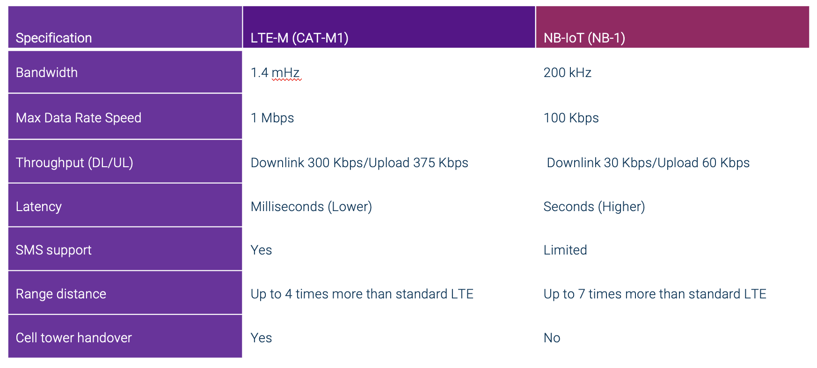
LoRaWAN
LoRaWAN network is another type of LPWAN technology based on another standard networking layer that has gained popularity in the EU. It does not present the advantage of leveraging ubiquitous and reliable cellular networks as it is not a cellular technology like NB-IoT/LTE-M. A new LoRa network of gateways is deployed to deal with LoRa devices.
Rather than sticking to a single signal, they distribute data across several frequency channels using varying data rates. This increases the gateway's capacity and, at least in theory, makes it more reliable.
Lora WAN is not necessarily known for its reliability and is, in most cases, unnecessarily complicated. For this reason, Lora WAN is becoming less popular over time and is not a recommended LPWAN solution for most businesses.
Sigfox
Sigfox is a proprietary LPWAN technology, meaning that it can only be used by Sigfox customers. It transfers data more slowly but has a wider range, making it a trade-off that some businesses will favour.
However, Sigfox is an LPWAN solution falling out of favour for newer technologies. It's only useful in a handful of cases and can be unreliable. It's also not recommended for most businesses.
You might also be interested in the below articles:
Blog Article: Massive IoT projects - CAT-M1 or NB-IoT?
Blog Article: LPWAN technologies explained
Blog article: What are the differences between LoRaWAN and NB-IoT?
PSM & eDRX features in LTE-M and NB-IoT
What is PSM?
PSM is a recent feature of cellular networking explicitly designed for IoT devices, short for power-saving mode. As its name implies, it allows idling devices to be placed in a low-power mode, conserving maximum energy when the IoT device is not in use.
This feature provides more control over when and how much power is used. PSM is key to keeping energy-related costs low, reducing traffic on a particular network, and lengthening the lifespan of devices.
PSM provides users total control over the feature, allowing them to enable or disable it per their own rules and needs.
What is eDRX?
Similar to PSM, eDRX is a power-saving feature of cellular networks. However, it was created specifically for mobile devices rather than the IoT sector.
What separates eDRX from PSM is when devices are connected to the network. It allows the devices to disconnect and reconnect to the network as needed, reducing roaming time. It, in turn, reduces power consumption.
eDRX is a sleep mode that lasts minutes, hours, or even days. Like PSM, it controls the user equipment/devices, allowing them to set the rules and requirements that enable the feature.
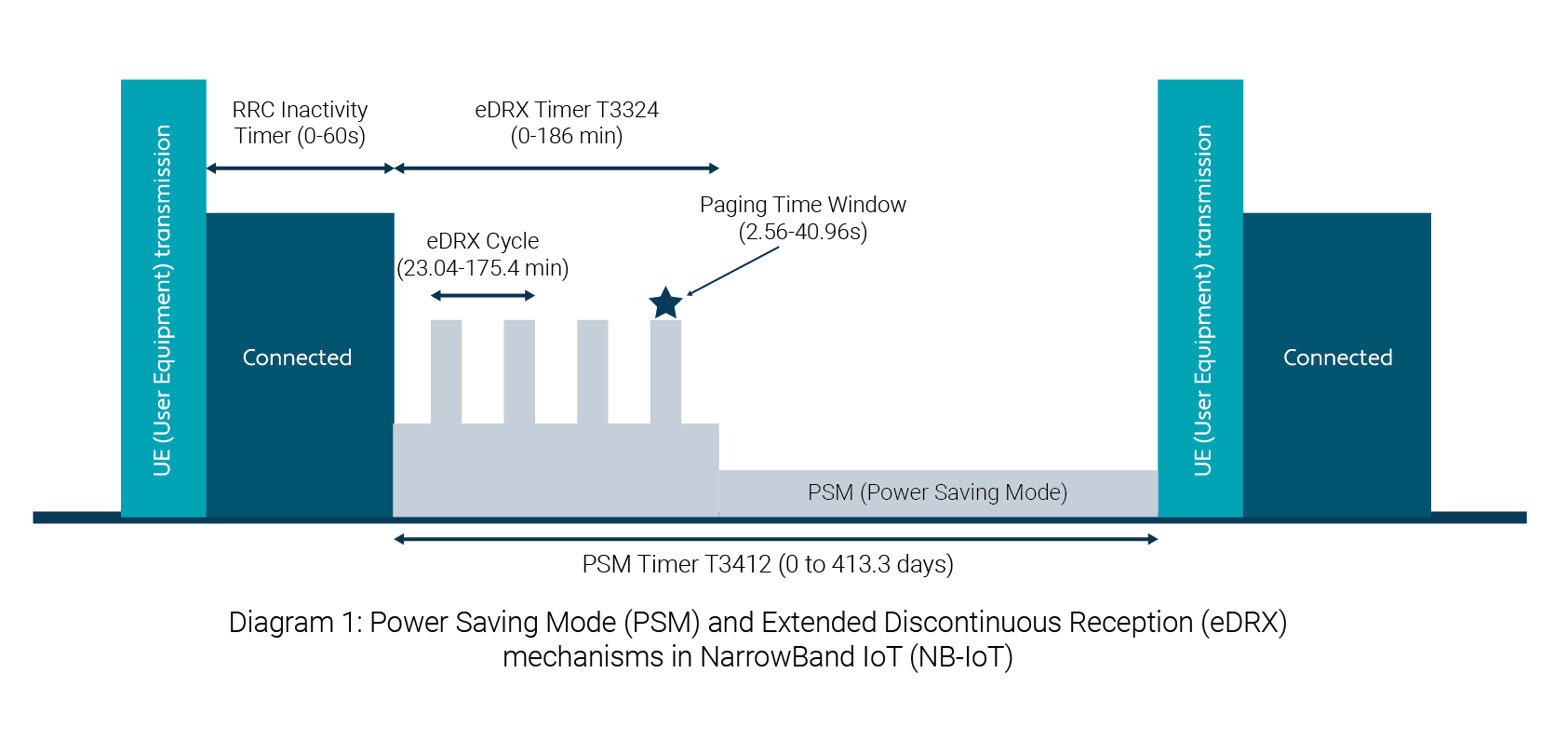
To learn more about PSM and eDRX features, read the blog article: What are PSM and eDRX features in LTE-M and NB-IoT?
LPWAN use cases in NB-IoT and CAT-M1
LPWAN is exceptionally versatile and particularly critical to the IoT industry. There are several IoT use cases for businesses in every sector. Below are a few LPWAN use cases to give you an idea of the possibilities LPWAN offers.
Sensors and smart metering
LPWAN is well-suited for use with sensors and smart metering for many reasons. These devices only need to send small amounts of data periodically, so the low data capacity of LPWAN is a perfect solution.
And because LPWAN is long-range, it can reach meters and sensors located outside and in remote locations.
Precision farming
The farming industry has a lot to gain from LPWAN technology as well. Farmers can use monitors on livestock to keep track of their location, reducing the chances of lost livestock or livestock falling into harm's way.
Sensors can also keep track of maintenance issues tied to equipment, keeping farmers prepared. Between equipment and livestock monitoring, LPWAN and IoT can go a long way toward modernising the farming sector.
Smart cities
Another use case for LPWAN is the smart city. Smart cities are urban areas where connectivity is the norm. Public utilities, lights, traffic signals, and public transportation can all be connected via LPWAN and IoT technology.
This has the potential to reduce traffic, improve public safety, and provide unique use cases for residents and visitors across the city. LPWAN can be an ideal solution for smart cities thanks to its existing connectivity options (LTE-M), and can provide robust connectivity in dense areas.
Industrial IoT
A popular segment within the IoT sector is industrial IoT. Industrial IoT uses IoT devices within industrial environments such as manufacturing or energy.
Businesses can use LPWAN to control and automate manufacturing procedures in this sector. Sensors can detect inventory and materials moving through a facility, providing richer insights into your material usage and output. And they can offer improved monitoring of industrial environments.
Human safety monitoring
For dangerous work environments, such as chemical plants, mining, or construction, LPWAN and IoT can work together to provide human safety monitoring. With sensors, businesses can keep track of dangerous gasses in the air, and be alerted when someone falls, becomes unconscious, or is otherwise injured.
Payment terminals
LPWAN can also be implemented in payment terminals. Retailers like grocery stores can use this to provide more sophisticated payment terminals, allowing for internet searches, updating the parent company on what items are being purchased instantly, and letting customers know when items will be back in stock.
LPWAN as an alternative to 2G/3G network sunset
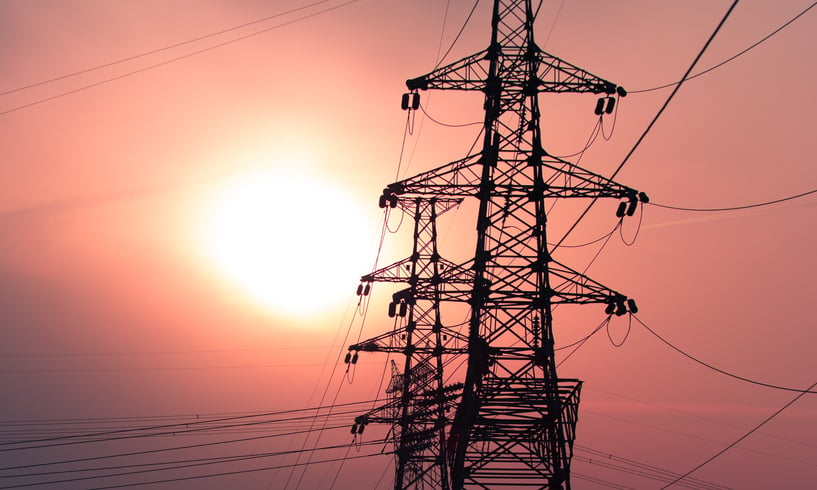
As a result of the rapid transformation of the cellular IoT technology landscape, 2G/3G networks are being depopulated of IoT devices and eventually will be shut down completely. While IoT businesses should be concerned and fast-acting regarding the sunsetting of 2G/3G, the situation isn’t wholly without opportunities. Newer LPWAN connectivity technologies like CAT-M1 and NB-IoT are becoming the most affordable and suitable replacement for 2G/3G networks, making them more accessible to various IoT businesses.
To be prepared, businesses can make critical progress while upgrading current IoT devices to these newer networks as early as possible. Follow our recent global 2G/3G sunset updates page to plan your alternative replacement.
Connect LPWA: The Velos IoT LPWAN Solution
Velos IoT offers Connect LPWA solution, which deploys your devices on low-power networks to save battery and costs. You can seamlessly swap between your existing 2G modules and future-proof with one of the market's largest Low Power Wide Area networks. Access LTE-M (CAT-M1) and NB-IoT (NB-1) in over 42 countries worldwide and utilise power-saving technology like PSM and eDRX for your devices that need to stay longer in the field.
Why Velos IoT?
Formerly JT IoT, Now a combined global business with Velos IoT, Top Connect and NextM2M. Velos IoT is a leading IoT connectivity solutions provider with over ten years of best industry knowledge and strong financial stability. We provide resilient global IoT connectivity with over 600 networks in over 200 countries and territories managed through a world-class connectivity management platform to over 17 million cellular devices worldwide. Whether you are a growing business or a global enterprise, we have a fully scalable business model that can be adapted to your specific business needs.
Want to start your IoT journey with us? Contact us today.


